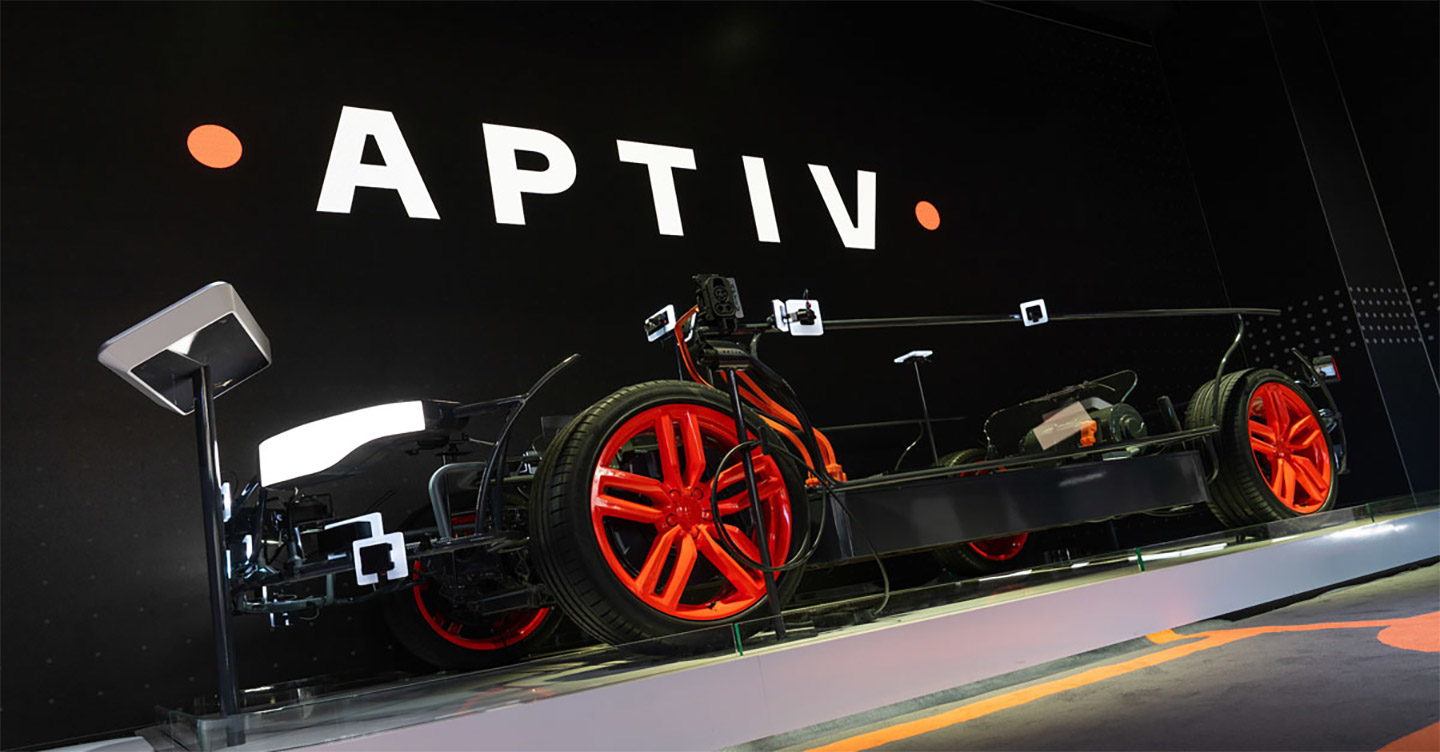Aptiv’s Architecture Vision on Display
Aptiv’s customers got a glimpse into the near future of cutting-edge vehicle technologies at CES 2020, as experts delved into the many opportunities presented by the company’s developments in software, sensing, electrification and more.
At the center of Aptiv’s presence at the show was Smart Vehicle ArchitectureTM, Aptiv’s vision for electrical and electronic systems to lower total cost of ownership while enabling feature-rich and highly automated vehicles.
SVA™ reimagines how software, compute, electrical distribution and connectors are managed in a vehicle. It reduces complexity and allows OEMs to add features to their vehicles in a much more elegant way than today’s architectures do.
“We are uniquely positioned in the market with the brain and nervous system of the vehicle, which means we can cover the complete architecture — from the software and the compute to the wiring harness and the sensors,” said Christian Schaefer, director of electrical and electronic systems for Aptiv’s Mobility Architecture Group. “So we saw all the issues, all the different customer philosophies — and in the end we said: Here is the condensed architecture where we think we can solve the problems of most of our customers.”
Separation brings it all together
A key tenet of SVA is separating software from hardware, so the architecture includes Aptiv’s Open Server Platform, which helps enable that approach as the industry moves toward software-defined vehicles. In the past, companies would develop vehicle hardware and software sequentially and bring them to market together, which was slow and limited how often vehicle software could be updated, mostly by model year.
“The OSP stops this. It opens the software for change,” said Martin Bornemann, director of systems for the Mobility Architecture Group. “It opens up the business model in a way that the customer later on can buy software, install it and keep it fresh, even in an older car.”
Another tenet of SVA is to separate the I/O from the compute inside a vehicle. Aptiv does this through its Power Data Centers (PDC), which enable zonal control of an area. Any sensors or other components in a particular area of the vehicle — which could include anything from radars, cameras and lidar to actuators such as pumps and electric motors — get their power and data connections through the corresponding PDC.
With the PDC handling the I/O, powerful domain controllers can focus on feature functions, which are likely to be on a different update frequency than the sensors and actuators. “You are free to add more features to the vehicle without the need to add more ECUs [electronic control units] within the vehicle,” said Sylvain Pirali, global chief engineer for Advanced Connectivity & Security.
As those sensors provide raw data, Aptiv’s technology uses low-level sensor fusion to stitch together data from multiple external sensors and provide a more complete picture of what is around the vehicle, drawing from the relative strengths of radar, cameras and lidar.
“These layers of sensing give a very detailed and trustworthy representation of the environment around the vehicle,” said Gabor Vinci, global product line manager for Active Safety. “This allows us to detect even the smallest targets and make reliable decisions for the vehicle.”
OEMs are moving quickly to electric vehicles, and Aptiv at CES showed how the cables, busbars and components that enable EVs are part of its architecture vision. EVs use high-voltage components, which can be much larger than the low-voltage wiring used in traditional vehicles, require more advanced shielding to protect other systems in the car from electromagnetic interference, and are designed to protect people during maintenance or in the event of an accident. Meanwhile, the low-voltage wiring is needed more than ever for these advanced vehicles, and Aptiv has the expertise to balance the two in one vehicle.
“At the same time we're talking about growing the size of the parts needed for electric vehicles, it's equally important now to optimize the low-voltage side of the car to make room for all that,” said Randy Sumner, director of global high power & autonomous architectures. “With the skill and background that Aptiv has, we can bring both of those things together to create value for our customer.”
In addition to these core architecture concerns, Aptiv also showed innovations in interior sensing, which enables a host of safety and convenience features for passengers and drivers. Cameras and other sensors inside the cabin can tell whether a driver is distracted and not looking at the road, if a child has been left in a vehicle, or if passengers are wearing seatbelts and positioned safely in the car for airbag deployment.
“As drivers, we're often distracted by things like looking at our phones or talking to a passenger, which take our eyes off the road. And in a few seconds, you can be in trouble without even realizing it,” said Doug Welk, advanced user experience (UX) engineering manager. “We want to detect those situations and get the driver back engaged in the driving activity.”
All of these technologies represent key components of Aptiv’s vision for the future of mobility. If you missed this year’s CES, you can get your own virtual tour of Aptiv’s pavilion with more details on all aspects of SVA in the 360° Experience on our CES page.
